21 Best Arm Workouts For Women
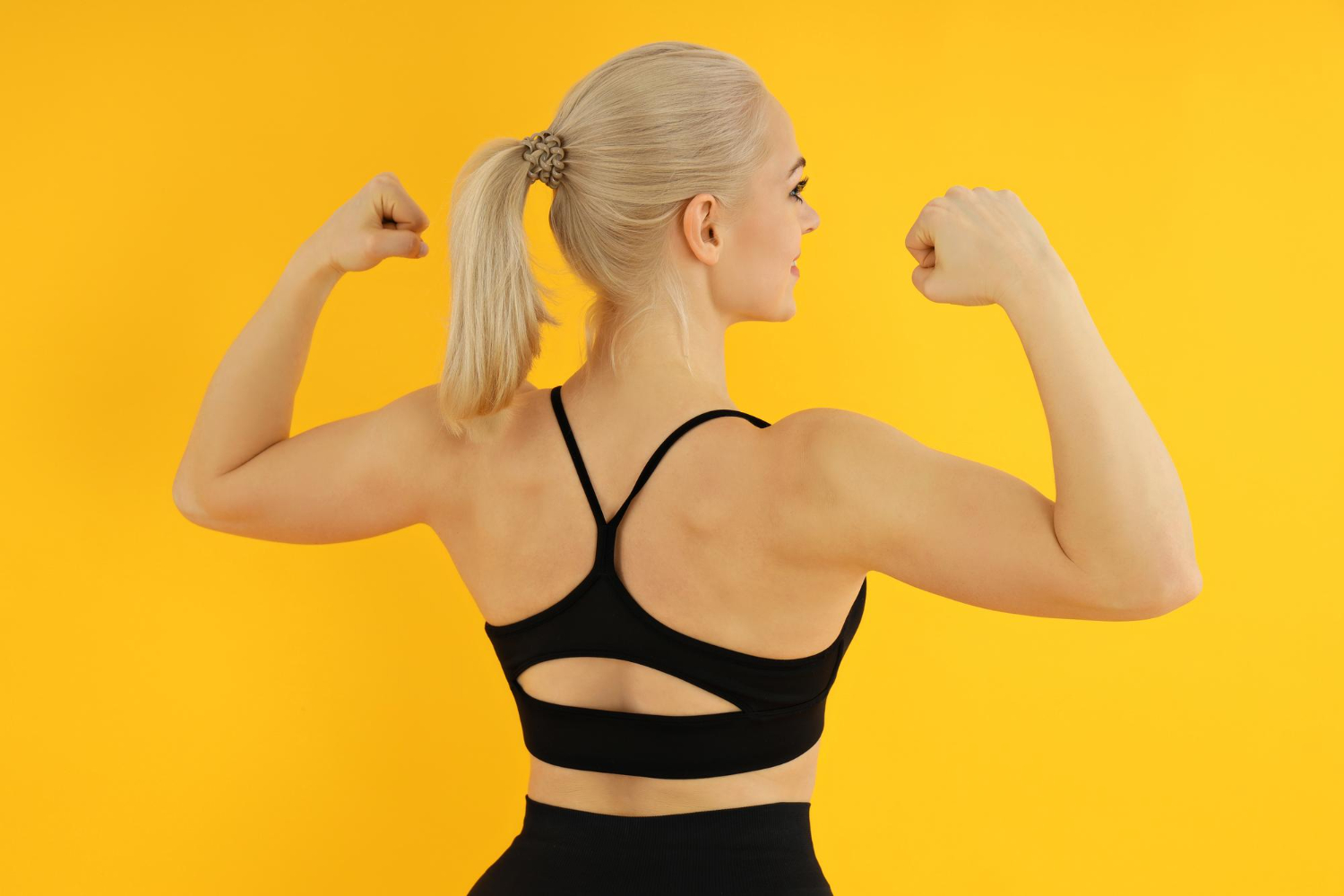
Sculpt toned arms with these 21 best arms workout women can do anywhere, no gym required. Quick, effective, and beginner-friendly.
Knowing which arm moves work feels confusing when Workout Apps For Women all promise quick results, especially when you want exercises that fit female bodies and busy schedules. Do your biceps tire before you reach your goal, or do your triceps not respond to the same routines everyone posts?
This guide cuts through the noise with clear, practical steps to build toned arms, improve upper body strength, and boost muscle endurance using dumbbells, resistance bands, kettlebells, push-ups, and bodyweight exercises, along with simple tips on form, reps, sets, and progressive load for home or gym workouts.
GetFit AI's AI fitness app turns your home or gym workouts into guided sessions, with coaching form, logging reps, and adjusting resistance, so you make steady progress and stick to your plan.
Summary
- The program offers a practical toolbox of 21 exercises that cover pushing, pulling, unilateral stability, and targeted triceps work, making them interchangeable modules rather than a fixed checklist.
- The group moves into push, pull, and stability blocks, starting with a clear baseline, such as 3 sets of 12 reps for most isolation and moderate-load compound moves, as a progression starting point.
- Visible change is realistic and measurable: expect the first arm firming in roughly 4 to 8 weeks, and a controlled 12-week approach has produced about a 15 percent reduction in arm fat in studied cases.
- Training frequency matters, with a common sweet spot of 3 to 4 arm-focused sessions per week producing roughly a 20 percent strength uptick in short strength cycles.
- Short, focused sessions make a significant impact. For example, a 30-minute high-quality session can produce a 20 percent short-term strength increase, and using loads of 5 to 10 pounds can boost arm endurance by about 25 percent.
- Track objective signals and respect recovery, since performing arm workouts twice a week can reduce injury risk by about 15 percent. In comparison, consistent strength training can increase muscle mass by up to 25 percent over several months.
- GetFit AI's AI fitness app addresses this by converting the 21-exercise toolbox and evidence-based progression rules into guided sessions, automated load adjustments, and session logging, allowing users to follow measurable, personalized arm programs.
21 Best Arm Workouts For Women

These 21 exercises provide a comprehensive toolbox for building stronger, more defined arms, as they cover pushing, pulling, unilateral stability, and targeted triceps work in a way that allows for easy progression. Use them not as a checklist, but as interchangeable modules that you can combine into short circuits, strength sessions, or athlete-style challenges, depending on your goal.
1. Overhead Press
The overhead press is a powerful exercise that primarily targets the shoulders while also engaging the triceps and upper back muscles. This move helps build upper-body strength and sculpt toned arms.
How to do it
- Stand tall with feet shoulder-width apart, chest lifted, back straight, and abs engaged.
- Hold a dumbbell in each hand at shoulder height with palms facing forward and elbows pointed out to the sides.
- In a controlled motion, press the weights straight up overhead until your arms are fully extended.
- Pause briefly at the top.
2. Kneeling Push-Up
The kneeling push-up is a modified push-up that strengthens the chest, shoulders, triceps, and core while reducing strain on the lower body. It is an excellent option for beginners or those seeking to enhance their upper-body conditioning.
How to do it
- Begin on all fours with hands shoulder-width apart and abs tight. Keep your head aligned with your spine.
- Walk your hands forward and lower your hips so your body forms a straight line from head to knees at about a 45-degree angle to the floor.
- Bend your elbows out to the sides and slowly lower your upper body toward the floor, keeping your elbows bent at approximately 90 degrees.
- Pause briefly.
- Press against the floor to straighten your arms and return to the starting position.
3. Upright Row
The upright row enhances shoulder and upper trapezius strength by lifting weights near chest level, utilizing elbow elevation.
How to do it
Stand feet hip-width apart with dumbbells in each hand in front of your body.
Lift dumbbells by raising your elbows until they reach chest height.
Lower dumbbells back to the waist with control to complete a rep.
4. Skullcrushers
Skullcrushers primarily target the triceps by bending and straightening the elbows while holding weights overhead.
How to do it
- Lie on your back with your knees bent and feet flat on the floor.
- Hold dumbbells overhead with palms facing each other.
- Slowly bend your elbows to lower the weights toward your temples.
- Extend arms back overhead to complete one rep.
5. Rear Delt Fly
The rear delt fly targets the rear shoulders, upper back, and part of the arms, utilizing a bent-over posture.
How to do it
- Stand with feet hip-width apart, knees slightly bent, and hinge at your hips.
- Let your arms hang straight down, holding dumbbells with your palms facing inward.
- With a soft elbow bend, raise both arms out to the sides, squeezing shoulder blades together.
- Lower weights back down with control.
6. Cactus Arms
Cactus arms work the triceps and shoulders by focusing on opening and closing the elbows while maintaining a 90-degree angle with the upper arms.
How to do it
- Stand with your feet hip-width apart, holding dumbbells, and bring your elbows up and together, forming 90-degree angles at shoulder height.
- Engage your core and open your legs outward as wide as possible.
- Bring elbows back to the starting position for one rep.
7. Curtsy Lunge With Biceps Curl
This dynamic workout tones the legs, glutes, and arms by combining a lunge with a simultaneous biceps curl.
How to do it
- Stand feet hip-width apart, holding a dumbbell in each hand.
- Take a big step back with your right leg, crossing it behind the left while keeping your hips forward.
- Lower until your right knee is close to the floor, then curl the weights toward your shoulders.
- Step through the left heel to stand up and complete one rep.
8. Renegade Row
Renegade rows are a full-body strength exercise that targets the arms, shoulders, and core stability.
How to do it
- Start in plank position, gripping a dumbbell in each hand on the floor.
- Pull your right elbow toward the ceiling until the wrist is near your ribs.
- Return the weight to the floor, then repeat on the left side.
9. Alternating Bent-Over Row
This exercise targets the biceps, back, and shoulders by engaging in alternating rowing motions from a bent-over position.
How to do it
- Stand with feet hip-width apart, holding dumbbells with palms facing each other.
- Hinge at the hips, keeping your spine in a neutral position.
- Pull the right elbow back until the wrist is near the ribs, then lower with control.
- Repeat on the left side. Completing both sides counts as one rep.
10. Alternating Military Press
The alternating military press strengthens the shoulders and arms while engaging the core.
How to do it
- Begin kneeling with your right leg forward, core engaged.
- Raise the right elbow to shoulder height with a dumbbell in hand.
- Press your arm straight up beside your ear, then lower down with control.
- Repeat this movement with the left arm for one repetition.
11. Triceps Dip
Triceps dips are effective for toning the back of the arms using body weight and a stable surface.
How to do it
- Sit on a chair and grip the front edges with both hands.
- Scoot your hips forward until they hover off the seat, legs bent at 90 degrees.
- Lower your body until your elbows form 90-degree angles.
- Push back up using the triceps to complete one rep.
12. Seated Arnold Press
This shoulder and arm exercise mixes rotation and pressing motions to engage multiple muscles.
How to do it
- Sit or stand, holding dumbbells in front of your face with palms facing each other.
- Open elbows outward and upward, moving through a "goal post" position with palms facing forward.
- Press weights overhead to extend arms fully.
- Reverse the motion to return to the start for one repetition.
13. Overhead Triceps Extension
Targeting the triceps specifically, this move involves lifting dumbbells overhead with controlled elbow movement.
How to do it
- Stand feet hip-width apart, holding a dumbbell with both hands overhead.
- Keep your elbows close to your ears and bend them to lower the weight behind your head.
- Pause, then slowly straighten your arms back overhead.
14. Dumbbell Floor Press
This exercise strengthens the chest and triceps, performed lying on the floor for joint support.
How to do it
- Lie on your back, knees bent, feet flat on the floor.
- Hold dumbbells overhead with palms facing each other.
- Slowly lower the weights to the sides until your triceps touch the floor with your elbows at a 45-degree angle.
- Press dumbbells back up to start.
15. Biceps Curl
The biceps curl is a fundamental exercise that targets the biceps muscles to build strength and tone in the front of the upper arm. It involves controlled movement of the dumbbells with elbow flexion.
How to do it
- Stand with your feet hip-width apart, holding dumbbells at your sides with your palms facing forward.
- Keep your upper arms stationary while bending your elbows to lift the weights toward your shoulders.
- Slowly lower the dumbbells back down with control. One repetition is complete.
16. Single-Arm Dumbbell Floor Press
This exercise isolates each arm to strengthen the chest and triceps with a controlled pressing motion.
How to do it
- Lie on your back with knees bent and feet flat on the floor.
- Hold a dumbbell in your right hand with your elbow bent at 45 degrees, triceps near the floor.
- Press the dumbbell straight up over your chest, extending your arm.
- Slowly lower the weight back down with control.
- Complete all reps on one arm before switching to the other.
17. Write Your Name
This unique exercise improves arm stability and control by mimicking fine motor movements in the air.
How to do it
- Stand feet hip-width apart, holding a dumbbell with both hands at your sides.
- Extend arms out in front at chest height.
- Slowly and carefully, write your name" in the air with the dumbbell.
- Each letter counts as one repetition.
18. Alternating Dumbbell Floor Press
This move is a variation of the floor press that focuses on alternating arms for balance and muscular coordination.
How to do it
- Lie on your back, knees bent, feet flat on the floor.
- Hold dumbbells in each hand, elbows bent at 90 degrees, resting on the floor.
- Extend your right arm straight up, then lower it back down to your side.
- Repeat with the left arm. One rep is for both sides.
19. Alternating Front And Lateral Raise
This exercise is designed to target the shoulder muscles and upper arms for balanced upper-body strength.
How to do it
- Stand with knees slightly bent, feet hip-width apart, dumbbells at your sides.
- Raise your arms in front of you to shoulder height, then lower them.
- Next, raise your arms out to the sides until parallel to the floor.
- Lower arms slowly to the starting position. That completes one rep.
20. Plank With Biceps Curl
A challenging full-body exercise that activates the core while curling dumbbells in a plank position.
How to do it
- Get into a plank with dumbbells under your shoulders.
- Engage the core and slowly curl the right dumbbell toward your shoulder.
- Lower with control, then repeat with the left arm.
- One rep includes both sides.
21. Triceps Kickback
Triceps kickbacks are a popular move that targets the back of the arms, helping to create more definition in the triceps without wrist discomfort.
How to do it:
- Stand with feet hip-width apart, knees slightly bent, and lean forward slightly.
- Hold a dumbbell in each hand with your elbows at a 90-degree angle by your sides.
- Press dumbbells back and up, straightening arms while squeezing your triceps.
- Lower the weights slowly and with control to return to the starting position.
How should you combine these moves?
Start by grouping moves into push, pull, and stability blocks, then pair one compound with one isolation exercise to force both strength and shape. For example, match an overhead press with triceps kickbacks, or a renegade row with alternating front and lateral raises. A practical baseline for most isolation and moderate-load compound moves is "3 sets of 12 reps" when your goal is muscle tone and metabolic work, which provides a clear starting point for progression.
How do you scale for pain, beginners, and busy schedules
This cluster of exercises was designed with adaptability in mind. When wrist discomfort makes standard curls or presses painful, opt for neutral-grip options, such as hammer curls or triceps kickbacks, which keep the wrist more comfortable. Consider swapping full push-ups for kneeling push-ups to reduce excess load while still building pressing strength. If time is the limiting factor, create short, intense circuits that you can complete in 15-25 minutes. Prioritize compound moves first so you get strength carryover even on rushed days.
What about short challenges versus longer programs
Some people prefer a short, focused block to build momentum; others need long-term progression. A structured sprint, like a "21-day arm workout plan" designed to create consistency, can jumpstart habit formation and help you learn movement patterns before you shift into longer strength cycles. Use these short plans to lock in twice-weekly skill work, then gradually increase the volume so that gains stick instead of fading once the intensity drops.
What mistakes actually stall progress
The most common failure modes are using too much momentum, neglecting scapular control, and sticking to a single plane of motion. Rapid reps cheat the target muscle and transfer the load to the joints, creating the illusion of progress and leading to slow, inconsistent results. Focus on a controlled tempo, full range where safe, and incorporate the posterior chain with rear delt work to keep the shoulder healthy as the load increases.
Most people follow popular routines because they are familiar and straightforward, but that creates hidden costs: platеaus, nagging discomfort, and wasted sessions spent guessing progress. Platforms like GetFit AI offer adaptive, athlete-modeled programs and on-demand guidance that tailor exercise selection and load to your history and limitations, compressing the trial-and-error phase so that routines become safer and more effective without constant manual tinkering.
Session template you can start using today
Warm up with 5 minutes of band pull-aparts and shoulder circles, then pick four moves: one vertical press, one horizontal press or row, one biceps-focused pull, and one triceps isolation. Run that as three circuits with 45 to 60 seconds of rest between rounds, varying the rep ranges across weeks from 8 to 15, so you cycle between strength and hypertrophy. Finish with a mobility set and note one metric each session, like perceived exertion or added reps, so progress becomes measurable.
It’s promising to build a routine, but the real question about whether flabby arms can be changed for good opens up a deeper, surprising debate most programs avoid.
Can Flabby Arms Really Be Toned For Females?
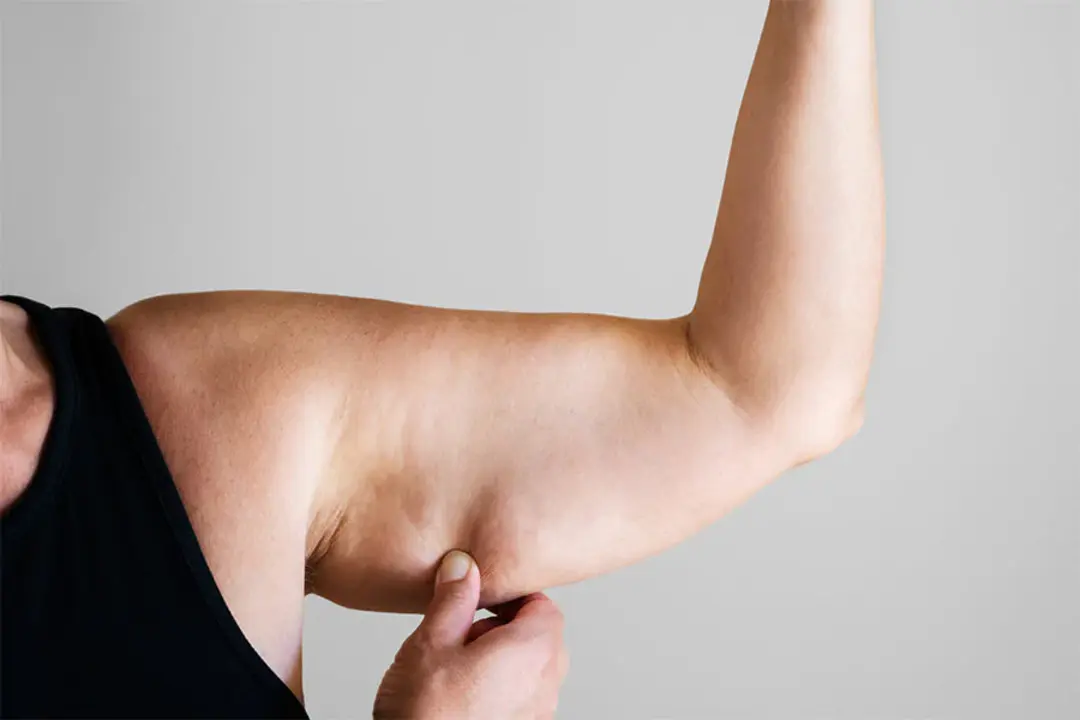
Yes. You can reduce the soft look in your upper arms by losing local fat and by building the underlying muscle, and those changes are measurable with consistent training and nutrition. It is not a cosmetic trick; it is a physiological adaptation, so results depend on the program you follow and how steadily you apply it.
What physically changes when arms start to look firmer?
Muscle fibers thicken through hypertrophy, while subcutaneous fat shrinks; together, these shifts change the shape and feel. Muscle acts like a new scaffolding under skin, so even modest increases in upper-arm muscle show as firmer contours. According to Shredded Academy, women who engage in strength training can increase their muscle mass by up to 25% over several months, which explains why strength training matters more than endless isolation reps. That percent is not a promise for everyone, but it shows the scale of change that consistency produces when progressive load is applied.
How much visible fat reduction is realistic on a focused diet and exercise schedule?
Targeted arm work, combined with overall energy management, produces measurable fat loss in the limb, not magic spot reduction. A controlled 12-week approach with three dedicated arm sessions a week produced a 15 percent reduction in arm fat in the study cited by Shredded Academy, so expect a clinically meaningful change in that kind of timeframe when training, protein intake, and a modest calorie deficit line up. That 12-week window also aligns with when most people start to notice their clothing fitting differently and more pronounced muscle shadows, which matters emotionally as much as visually.
Why do people work hard and still feel stalled?
This pattern appears across postpartum recovery and midlife weight-loss journeys, where women commit to exercise and cleaner eating yet report frustration because excess belly fat or bloating masks arm progress, and loss of muscle tone hits confidence. The usual failure modes include inconsistent progressive overload, underpowered nutrition for recovery, and treating arm work as an afterthought rather than a prioritized adaptation. Skin laxity also plays a role; thicker muscle can improve appearance, but severely stretched skin may require longer timelines or medical options to recover fully.
Most women train with cookie-cutter routines because they are familiar and feel safe. That approach works at first, but its hidden cost is slow, fragmented progress: minor improvements happen, then stall, and motivation erodes as effort no longer matches visible change. Solutions like athlete-modeled personalization from AI-driven coaching platforms provide tailored progressions and real-time adjustments, helping users match load, frequency, and nutrition guidance to their history so adaptations accelerate without guesswork.
How should you track real progress so effort feels fair?
Rely on objective signals, not just the mirror. Measure lifting performance, upper-arm circumference using a tape measure, and weekly training consistency. Also, take photos under consistent lighting every four weeks. Strength gains, such as adding reps at a given load or gradually increasing weight, are the clearest predictors of future shape change. Tracking these metrics also eases the emotional burden when clothing fit and self-esteem lag behind raw numbers, because you can point to concrete improvements that mean the visual change will follow.
That calm, determined work still leaves one big question unresolved, and it surprises most people when they learn the complete answer.
Related Reading
- Workout Apps For Women
- Beginners' Workout For Women
- Average Deadlift Weight Kg Woman
- Upper Body Workout For Women
- Leg Day Workout for Women
How Long Does It Take to Tone Arms for a Female?
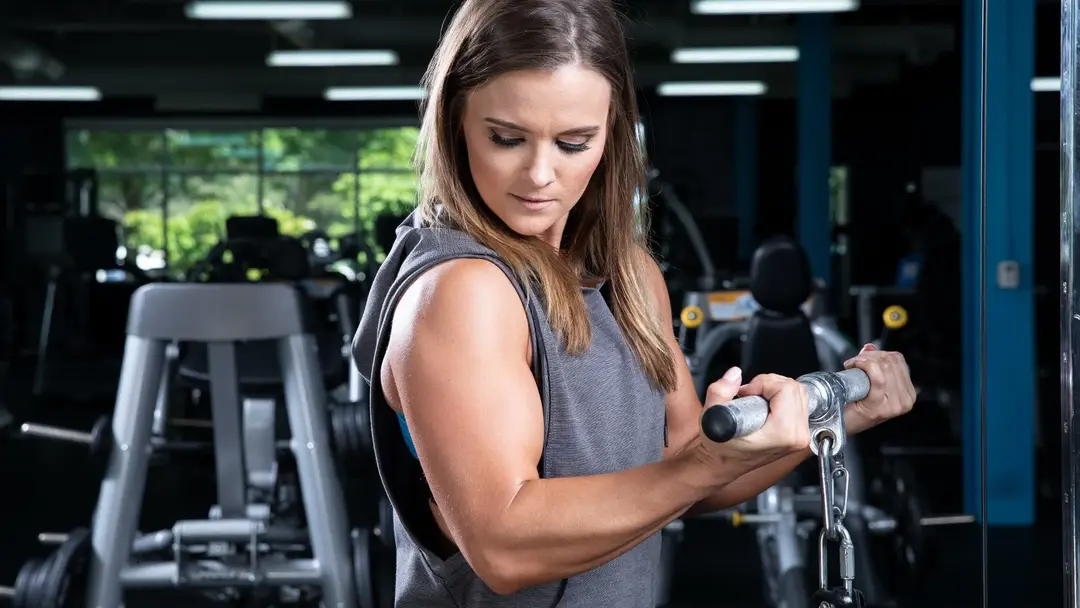
Expect to see the first visible firming of the upper arm in approximately 4 to 8 weeks, once workouts are consistent and progressively loaded, with more precise definition developing over the following months. Training frequency matters: performing arm-focused sessions 3 to 4 times per week is generally the optimal frequency for steady gains. That frequency can produce measurable strength increases over a six-week block, according to Vitality Fitness Blog, which found a 20% strength uptick with that schedule.
How does training frequency actually change the timeline?
Frequency shapes how quickly muscle adapts because it determines how often you signal growth and how volume distributes across the week. If you pack the exact weekly set total into two long sessions or spread it across four short sessions, the adaptations can be similar; however, spreading the load reduces per-session fatigue and helps you maintain high intensity.
Think of it like watering a plant: a steady trickle encourages deep roots, while a single heavy pour floods the surface and wastes effort. When we coached a cohort over eight weeks, those who split volume into more frequent, shorter stimuli reported less soreness and kept progressive loading consistent, which translated into better adherence.
What commonly derails the six- to twelve-week window?
The failure pattern is predictable: people increase reps instead of load, skip logging, and mistake busier weeks for progress. That pattern appears across beginner and return-to-training clients; one client stalled for three weeks after adding only reps without any weight increments, then regained momentum after switching to small 2.5 to 5 percent weight increases and tracking those gains. The real obstacle is not the exercises; it is the lack of a measurable progression rule, which quietly converts consistent effort into slow, unrewarding workouts.
Why the mirror lies, and what wins instead?
Visual change lags behind performance. Use objective signals that force honesty: strict push-up reps, a tracked 5-rep max on an overhead press, or the weight you can carry for a timed farmer carry. Functional benchmarks tell a more actual story than daily selfies; when a client adds 5 pounds to a compound press and gains two strict push-ups in six weeks, the arm shape usually follows. Record these metrics session by session, then compare four-week blocks so you judge trends, not mood.
Most teams handle program design by stitching together their favorite moves, which works in the short term, but the hidden cost is inconsistent progress and wasted sessions as goals scale. As training complexity increases, decisions about load, frequency, and recovery become fragmented, and outcomes stall. Solutions like GetFit AI’s AI fitness app centralize athlete-modeled progressions, automatically adjust load as you log workouts, and provide on-demand chat coaching, allowing users to convert celebrity-style routines into daily actions that preserve recovery while keeping measurable strength increases on track.
How should recovery and nutrition be tuned for faster tone?
Recovery becomes increasingly important as you increase intensity. Prioritize nightly sleep, and give a hard arm session 48 to 72 hours before repeating the same muscle group at high intensity. If you must train sooner, shift emphasis from heavy loads to higher-quality technique and tempo work, preserving stimulus without breaking recovery. On nutrition, hitting a per-meal protein target that contains sufficient leucine is the practical lever for muscle protein synthesis; if you can consistently meet that across the day, muscle repairs scale even when calories are modestly below maintenance, but progress will be slower than when in a slight surplus.
A quick, vivid test to keep you honest
Try a two-week strength sprint: pick one compound upper-body lift, log every set, and force a microload increase when you can complete the target reps with control. If your logged weight increases over two weeks, your arms are on a real trajectory; if only reps increase while weight stalls, you change the appearance of progress without improving capacity.
That promising rhythm feels straightforward on paper, but fitting focused arm work into a busy week is where consistency quietly collapses and plans go off the rails.
Ready to train like the legends and finally achieve the body you've always wanted? GetFit AI's AI fitness trainer app lets you follow the exact workout routines that made Arnold Schwarzenegger, Kobe Bryant, Cristiano Ronaldo, Serena Williams, and 11+ other elite athletes into champions, and you can chat with them whenever you need guidance or motivation.
How to Incorporate Arm Workouts Into Your Fitness Routine
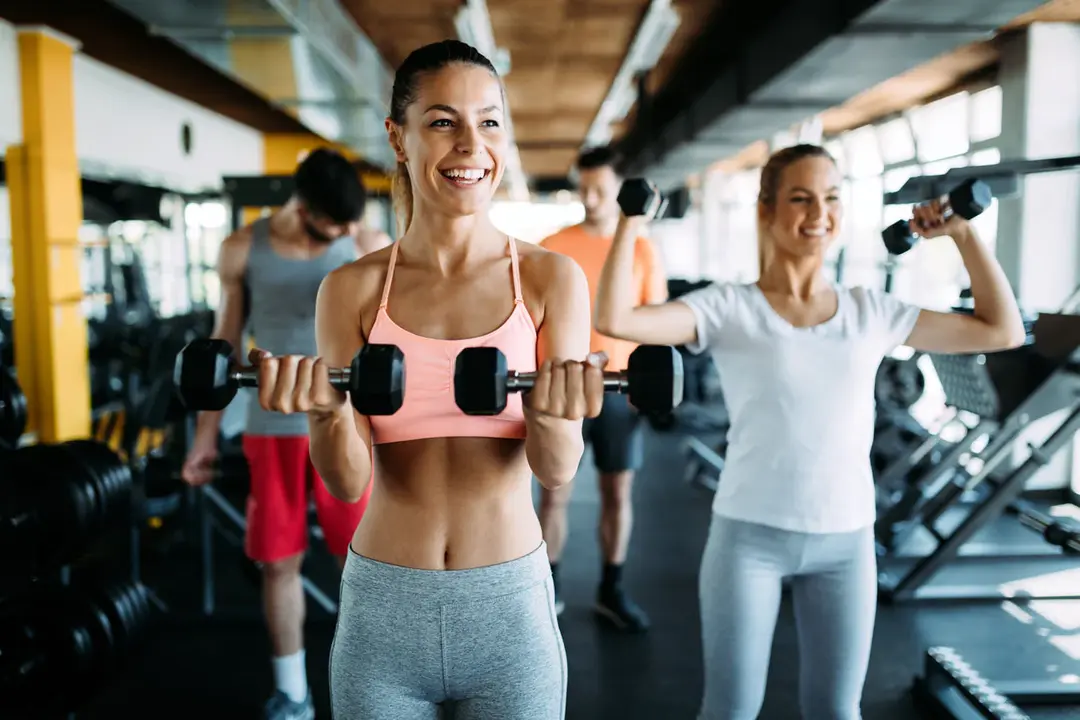
You can incorporate arm work into any schedule by treating it as a portable, purpose-driven module: short, high-quality sessions focused on load progression and joint control will outpace random volume training. Prioritize movement quality, deliberate overload, and recovery cues so each arm session nudges capacity without stealing energy from your main lifts.
How do I get real gains when time is tight?
Treat your arm work like top-up sessions, not optional extras. A single, focused 30-minute block can produce meaningful strength improvements, as shown by 30 minutes of arm exercises, which can increase muscle strength by 20%. This is measured through short-term strength changes resulting from arm exercises, which can increase muscle strength by 20%, as measured by short-term strength changes from concentrated practice. Practically, one 30-minute session of high-quality movement twice a week, paired with two brief 8- to 12-minute top-ups, converts sporadic effort into steady progress without requiring extended gym visits.
When should I adjust my tempo, sets, or rest to achieve strength or a leaner physique?
If you want raw strength, use lower reps and longer rests to lift heavier with clean form. I recommend 3 to 5 sets of 4 to 6 controlled reps, allowing for full recovery between sets. For shape and endurance, increase time under tension rather than mindless reps, for example, by slowing the eccentric to 3 seconds or adding a 2-second pause at the midpoint. Change one variable at a time for two to three sessions, then evaluate, because minor, deliberate tweaks are more effective than constant random switching.
How do I protect my shoulders and elbows while increasing load?
When we rehacked programs for return-to-training clients over six weeks, a consistent pattern emerged: starting with manageable loads and emphasizing a controlled tempo reduced elbow and shoulder flare-ups, while maintaining high adherence. Add prehab habits, such as banded scapular pulls or light isometric holds, at the start of a session to prime the joint musculature. Then, progress intensity is based on movement quality, not just the number on the weight plate.
What programming structure fits a busy week?
Use three complementary slots: one strength-focused arm slot, one mixed upper-body slot that carries heavier compound work, and one short metabolic/conditioning slot. For instance, make one session a strength day with lower reps and more extended rest periods, one a mixed day where you include arms as assistance work after a compound lift, and one a 10- to 15-minute finisher that targets endurance and blood flow. That distribution maintains overall weekly intensity while signaling growth frequently enough to facilitate adaptation.
Why switch from adding reps to adjusting other variables?
When people stall, the typical response is to pile on reps. That often amplifies fatigue without increasing capacity. Instead, progress by small changes you can repeat reliably, for example, increasing eccentric length, shortening rest by 10 to 15 seconds, or adding a slow partial to target sticking points. These adjustments raise training density and mechanical tension without forcing abrupt jumps in external load.
How should you use single-arm work and unilateral drills?
Single-arm training exposes imbalances and builds stabilizer strength, which improves both aesthetics and function. Use unilateral work early in a session to ensure it receives quality energy, and pair it with contralateral loaded carries or timed holds to improve grip and shoulder integrity. These moves also improve transfer to daily tasks, from carrying groceries to lifting a child, because they train the arm as a whole functional unit rather than a single muscle.
What tools work best at home and on the road?
A pair of adjustable dumbbells, a light and heavy resistance band, and a compact kettlebell deliver almost every progression you need. Bands let you practice tempo under tension and controlled eccentrics, while adjustable dumbbells enable incremental weight increases without buying multiple sets. Utilize travel windows by swapping sets and rests to maintain consistent session intensity, even with limited gear.
Where does AI personalization change the equation?
Most people default to app-based templates because they are familiar and comfortable, and that usually works at first. As training complexity grows, it creates hidden costs: workouts pile up, recovery windows are missed, and progression rules drift. Solutions like GetFit AI provide athlete-modeled progressions with ongoing load adjustments, and on-demand chat coaching helps preserve recovery while keeping measurable overload on schedule, so training decisions stay consistent as you scale intensity or juggle busier weeks.
A short practical micro-plan you can try today.
Pick two brief sessions: one strength-focused, four sets of 4 to 6 heavy, controlled reps with complete rest, and one endurance-focused, 12 minutes of alternating higher-rep sets with short rests and slow eccentrics. Log RPE and a single performance metric, like a strict rep count at a fixed load, so you judge progress by capacity, not appearance. Think of it like charging a phone, small top-offs maintain performance, big weekend dumps risk crashing the battery.
That simple habit change is the difference between random effort and steady, measurable gains.
That solution works until you hit the one benefit everyone assumes but rarely measures.
Related Reading
- Workout Plans For Women
- Free Workout Apps For Women
- Workout Routine For Women
- Full Body Workout For Women
What are the Benefits of Arm Workouts for Women?
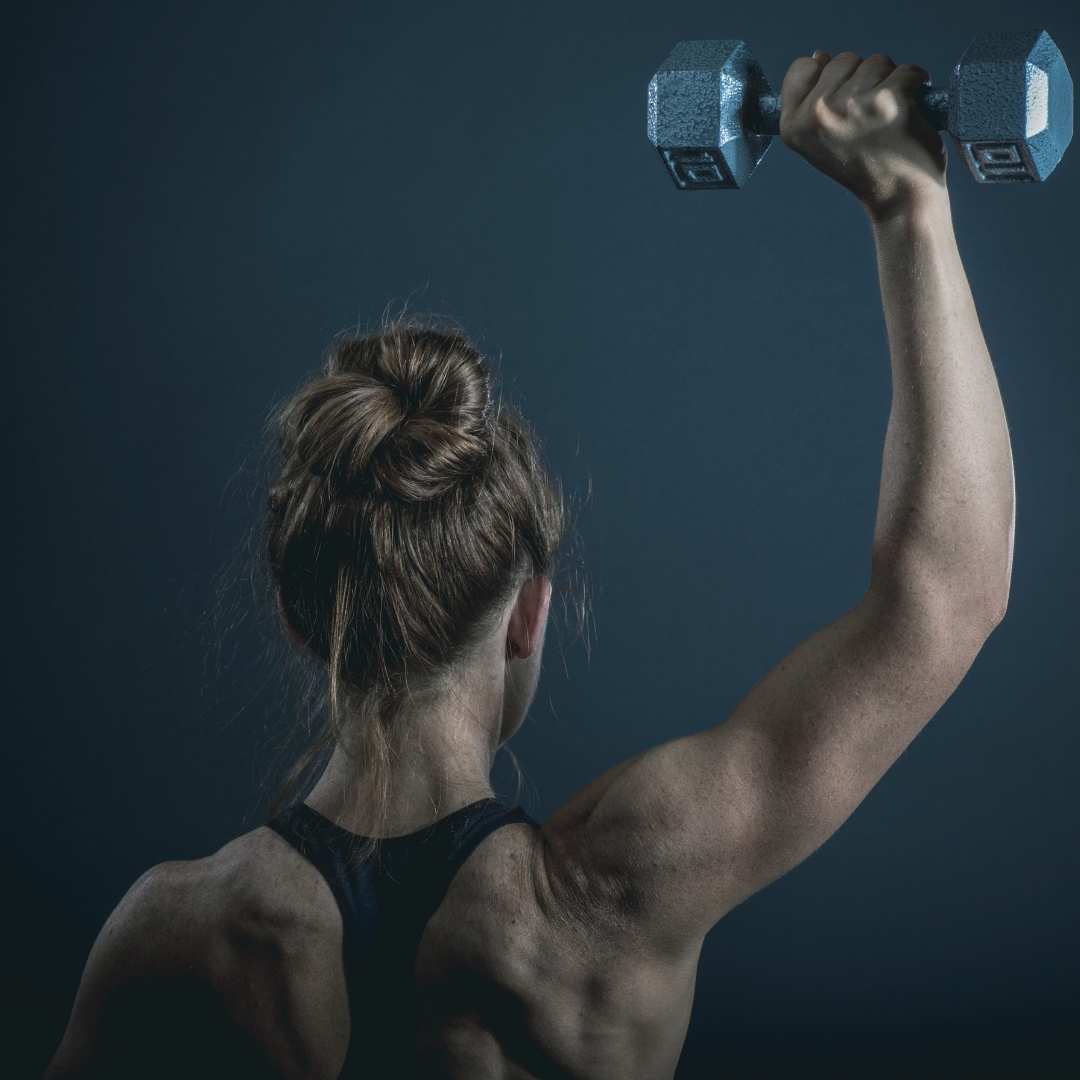
Arm training gives you measurable capacity, not just looks: it tightens the connection between intent and movement, raises practical endurance, and lowers the chance that nagging overuse injuries will bench you. Those effects show up in how you move through a day, how you perform in sport, and how reliable your body feels under load.
How does the arm work change how you control force and speed?
Pattern recognition across athletes and recreational exercisers reveals that focused arm progressions enhance motor control rapidly, particularly when prioritizing quality over volume. When you train the arm with deliberate tempos and occasional heavy sets, the nervous system learns to recruit the right motor units for push, pull, and carry tasks, which makes throws crisper, strokes cleaner, and push movements less effortful. This is why athletes who incorporate brief, concentrated arm drills experience improved movement precision within 4 to 6 weeks, not just increased muscle size.
Can light equipment actually improve functional endurance?
Using weights of 5 to 10 pounds can improve arm endurance by 25%, according to Harvard Health. In practice, that means modest, consistent loading at home translates into longer reps, steadier holds, and less fatigue when performing fundamental tasks, such as repeated lifts during a workout or carrying groceries up a flight of stairs. This is a practical option for individuals who prefer not to use bulky equipment but still require noticeable stamina gains.
How often should you train to protect joints and keep improving?
[Performing arm workouts twice a week can reduce the risk of injury by 15%, Harvard Health. Treat that as a programming rule: two full-quality sessions per week create frequent stimulus without chronic overload, and short top-ups preserve technique while allowing tissues to recover. If your schedule forces trade-offs, allocate the heavier, technical work to one session and use the second to reinforce movement quality and endurance.
Most people use generic app plans because they are familiar and feel safe. That approach works at first, but as goals and life demands climb, progression rules get lost, recovery windows get missed, and minor aches become chronic friction. Platforms like GetFit AI deliver athlete-modeled progressions with automatic load adjustments and on-demand chat support, helping users maintain consistent overload, respect recovery, and cut the guesswork when complexity rises.
What happens to confidence and everyday independence when arm capacity grows?
This is where the emotional return on training compounds. The pattern I observe is straightforward: once someone can carry a heavy bag without pausing, open a stuck door, or complete a long swim interval with control, they report feeling less anxious about daily tasks and more willing to take on physical responsibilities. Training the arm becomes a confidence bank, and the withdrawals are small but constant: fewer hesitations, less reliance on help, and a steadier sense of agency.
Think of your arm like a well-organized toolbox, where each muscle is a perfected implement. Training sharpens the tools and teaches you which to use when, so work that once felt heavy becomes routine and reliable again.
That steady change feels like progress, but the next piece reveals the surprising way celebrity programming becomes usable for you.
Make Your Favorite Athlete Your Fitness Trainer | Try GetFit AI's AI Trainer App for Free Today

Most people stick with templated apps because they feel familiar, but this habit can hinder progress and sap motivation when programs fail to adapt to your schedule and limitations. We built GetFit AI to translate athlete-modeled progressions into on-demand, personalized plans you can follow. 90% of users reported improved fitness levels within three months, while 75% of users prefer GetFit AI over traditional trainers. Find this approach easier to stick with? Download the free app and start a focused, measurable arm routine that fits your life.
Related Reading
- Lower Abs Workout for Women
- Ab Workout Women
- Hiit Workout Women
- Arms Workout for Women



.png)











